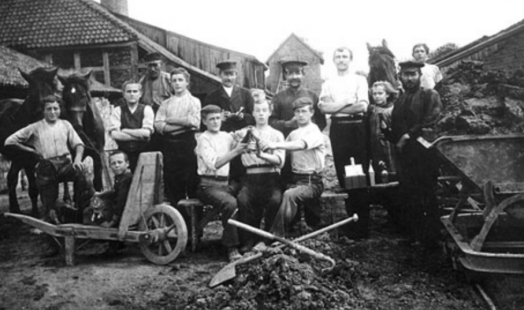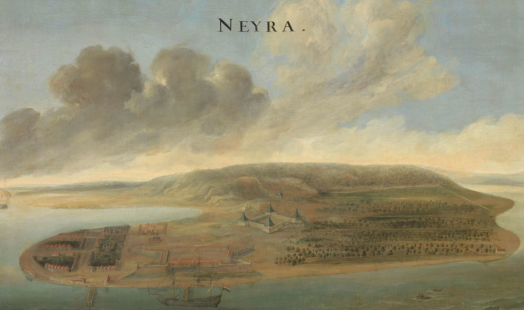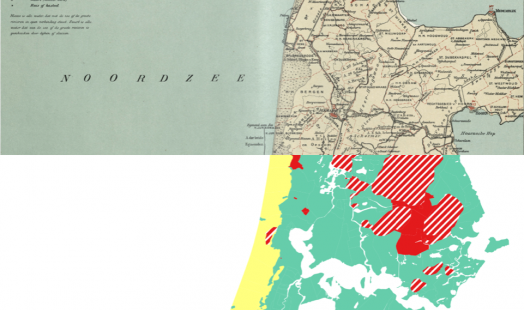
Research Projects
The IISH conducts research in Project Clusters.
- Global Labour Relations
- Commodities, Environment and Labour
- Social and Economic Inequality
- Collective Action and Individual Strategies
This is an overview of the Research Projects within the four clusters.

Slavery Insured
The project “Slavery Insured: A study into the Amsterdam Assurantie Compagnie 1771 and its involvement in slavery, 1771-1873” focuses on the history of one Amsterdam insurance company and its involvement in slavery. So far, the role of insurance companies in both the slave trade and the trade in slave-produced commodities has remained under-researched.
Migrants and the Court of Amsterdam, 1600-1800
This project will look anew at this assumption of tolerant co-existence between migrants and locals, by studying the institutional treatment of migrants as well as their interpersonal interactions with their neighbours, as documented in the archives of the urban judicial system. By looking at how heavily place of origin affected the treatment of migrants in the Dutch Republic, we can add a more nuanced layer of analysis to the characterization of the early modern Dutch Republic as ‘tolerant’, beyond an analysis of confessional co-existence, or of long-term social mobility trends
GLOBALISE: Digital research infrastructure for VOC archives
Consisting of approximately twenty-five million pages, the UNESCO Memory of the World-listed archives of the Dutch East India Company (Verenigde Oost-Indische Compagnie, VOC) offer a unique view on interactions between European and non-European actors in Asia in the seventeenth and eighteenth centuries. Currently, however, doing research on this vast collection of handwritten documents is extremely challenging. The GLOBALISE project creates an online research infrastructure that unlocks the key series of VOC documents and reports for advanced new research methods. The infrastructure will engage the wider public with this many-sided and increasingly hotly-debated period of Dutch overseas history.
Staat en Slavernij
State and Slavery details how the Dutch state and its predecessors were involved in colonial slavery. It describes how different stakeholders, such as enslaved people, administrators, and entrepreneurs in the Dutch Republic and in colonized societies responded to slavery. The project has the dual aim to explore current research into the Dutch colonial slavery past and the latter’s impact on contemporary societies through the publication of State and Slavery and, additionally, to draft an agenda for future research into Dutch slavery practices.
Resisting Enslavement: A Global Historical Approach to Slavery in the Dutch Atlantic and Asian Empire (1620-1815)
This project questions how resistance by enslaved impacted slavery and modes of enslavement in societies connected to the global Dutch colonial empire. By studying slave resistance from a global micro-historical perspective, the Resisting Enslavement project questions how different modes of enslavement impacted i) patterns of slave trade, ii) the labelling and treatment of enslaved, iii) and the social and resistance strategies of enslaved in the early modern Dutch Atlantic, Indian Ocean and Indonesian archipelago worlds.
Land Grabbing Empire: State Strategy and Large Scale Land Transfers in Dutch Expansion (16th-18th century)
Land grabbing, defined as the forced transfer of land from peasant producers to commercial investors, deeply affects the organization of global agriculture. Although the roots of this phenomenon go back centuries, its dynamics are still poorly understood. The reason is that land grabbing is usually analysed as a form of violent, rent-seeking behaviour, counterpoised to the institutional underpinnings of advanced market economies.
Atomic chains. Nuclear power, activism and the planetary future, 1960-1990
From the rise of atomic fission in the 1940s to the Chernobyl disaster of the 1980s, the future was nuclear. Scientists, politicians and policy makers predicted a transition to a new, virtually inexhaustible, cheap and “clean” energy source. But this first “energy transition” met with resistance in nations across the globe. In the Netherlands various groups united in the anti-nuclear energy movement (AKB).
The Lives and Afterlives of Imperial Material Infrastructure in Southeastern China
This project (InfraLives) offers a critical analysis of how large-scale infrastructures such as roads, city walls, and bridges have contributed to regional and empire-wide integration, but equally why and how processes of integration regularly broke down, and how large-scale infrastructure projects contributed to countervailing trends including local tension, local autonomy, and cross-border regional formations.
(Re)counting the Uncounted. Replication and Contextualisation of Dutch and Belgian Premodern Population Estimates (1350-1800)
Establishing how many people inhabited a particular area is not just an academic exercise. It is the cornerstone of historical, economic, and social scientific research.
The Amsterdam boxes: Photographers Kati Horna and Margaret Michaelis in the Spanish Civil War
Research on two Jewish antifascist women photographers from Central Europe: the Hungarian Kati Horna and the Austrian Margaret Michaelis. After leaving Nazi Berlin in 1933 they both ended up in Barcelona during the Spanish Civil War, committed to the anti-fascist and revolutionary struggle carried out by the anarchists of the CNT (National Confederation of Labor) and the FAI (Iberian Anarchist Federation).
VOC-schip Rooswijk: vergaan maar niet vergeten
Op 10 januari 1740 verging het VOC-schip Rooswijk in een zware winterstorm voor de kust van Engeland. Anno 2018 staat het schip volop in de schijnwerpers. Afgelopen zomer werd de opgraving van het schip voor het 2017 afgerond. Britse en Nederlandse archeologen, professionele duikers, amateur archeologen en tientallen studenten, hebben duizenden vondsten naar boven gehaald. De Rijksdienst voor het Cultureel Erfgoed, die dit project leidt, werkt samen met Historic England aan het vervolg van het project in 2017 en 2018.
Resilient diversity: The governance of racial and religious plurality in the Dutch empire, 1600-1800
How did Dutch colonial institutions govern diversity in North America, the Caribbean, Western Africa and Asia? How can we explain these institutions’ resilience and their lasting impact on modern systems of governance of diversity?
- Project lead: Ulbe Bosma, Matthias van Rossum
- Grant: € 749,840 (€ 316,920 IISH) by NWO
- Start: 2017
- Partner: Leiden University













